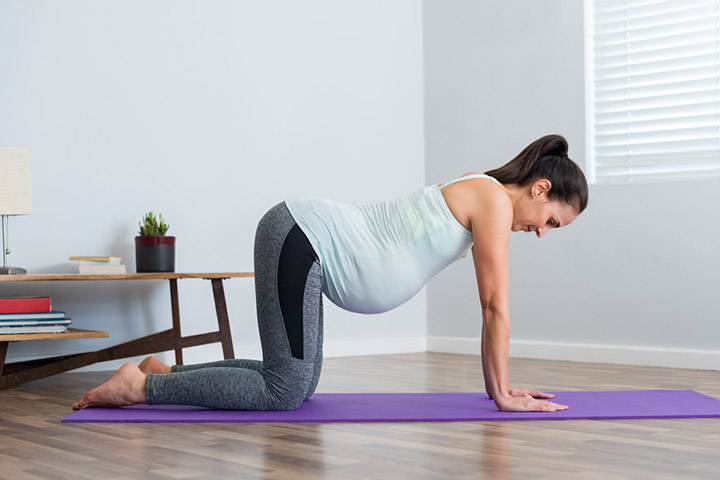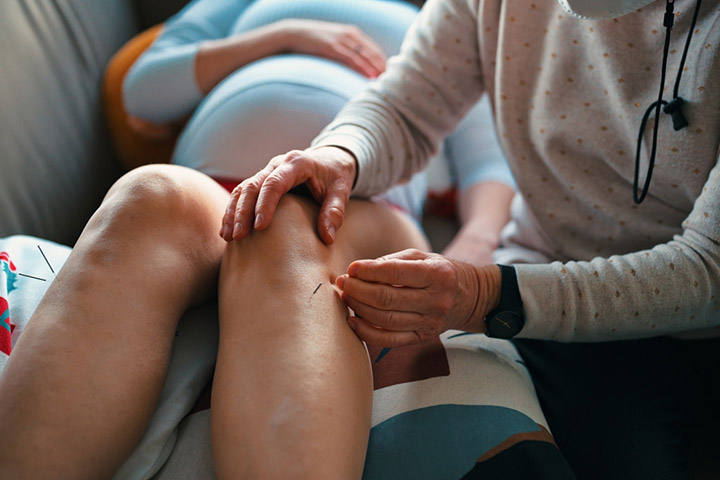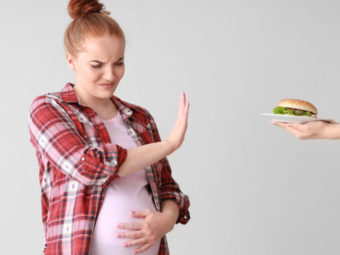
Image: Shutterstock
One of the first things a pregnant woman learns is that the position of the baby is extremely important, when it comes to having a safe delivery. The infant must be head down in the womb if a successful vaginal delivery is to take place, and the failure of this can lead to C-section. However, there’s no need to panic just yet. There are a few natural ways in which you can flip a breech baby in the right position. Although it’s important to keep in mind that even if your baby is head down, there are other aspects of the fetal position that can compromise a natural delivery. And one such position is called the posterior position. While it is possible to have a vaginal birth when your baby is in this position, it isn’t optimal and can lead to complications. If you want to know more about what goes into having and trying to turn a posterior baby, then read on!
What Is A Posterior Baby?
A posterior baby is medically known as a fetal occiput posterior. And what this means is that the back of the baby’s head is facing the mother’s back. This essentially means that the baby’s spine is up against the spine of the mother. These posterior babies are also popularly known as “sunny side up” babies. The best fetal position is known as occiput anterior which means that the baby is facing the mother’s back. This is when the crown of the baby’s head can emerge first through the mother’s dilated cervix. This way the chin slightly flexes towards the chest. This is important as it minimizes the diameter of the baby’s head which in turn allows the baby to fit optimally through the mother’s pelvis and birth canal. Therefore having a posterior baby increases your risk of longer labors, hemorrhage, labor augmentation and can worsen tearing.
Ways To Naturally Turn Your Posterior Baby
1.利用重力来做这项工作
请记住,婴儿的头部和背部the densest parts of their body. This means that making your belly into the shape of a hammock will assist you in turning the heavy back of your baby towards your front. Forward leaning positions can also make the womb larger and rounder which can give the baby more room to rotate. There are a couple of positions you can use in order to help gravity slowly rotate your baby into the right position.
- Getting on all fours or hands and knees
- Standing while leaning forward, and resting hands on a bed, wall, or ball
- Straddling an armless chair backward and resting arms and head on the back of the chair
2. Pelvic Rocking
Pelvic rocking also known as the pelvic tilt also uses gravity and can be used to encourage your baby to rotate its back towards your front. All you need to do to execute the pelvic tilt is to get on the bed or the floor on all fours. Start to slowly alternate between arching your back to the sky and then the ground. You can even try crawling on your hands and knees as this can mimic the pelvic movement and ease your baby into the right position.
3. Rebozo
Now, there aren’t any formal studies that claim that this method works but a rebozo or mexican woven shawl has a long and rich history of being used to reposition a fetus in the womb. Besides, it can also provide some much needed comfort and physical relief to a mother in labor. If you don’t have a rebozo you can also use a large scarf or a bed sheet folded in half to do the job. However, there is a specific technique to employ while using it. Make sure the mother in labor is on her hands and knees, the child’s position or on her back. Depending on the position, the rebozo will be used as a hammock or provide grip for her hips, buttocks or belly. It will aid in sifting, rocking or shimming in order to encourage the baby to rotate.
4. Relaxation
Uterus and pelvic floor relaxation can also help allow more space for your baby to rotate in the uterus. These relaxation and repositioning methods can include acupuncture and Webster chiropractic care which can be quite effective when done by a professional.
Even if your baby refuses to rotate after employing all these techniques, don’t worry. They might just spontaneously turn during birth. The point is to keep trying and encouraging your baby to rotate well before the time for delivery is near so that you have a better chance of getting them in optimal position.
Sources
- Persistent Occiput Posterior position – OUTcomes following manual rotation (POP-OUT): study protocol for a randomized controlled trial, NCBI
- Fetal Malpresentation and Malposition: Diagnosis and Management, NCBI
- The fetal occiput posterior position: state of the science and a new perspective, NCBI
- Rebozo Technique for Fetal Malposition in Labor, NCBI
















